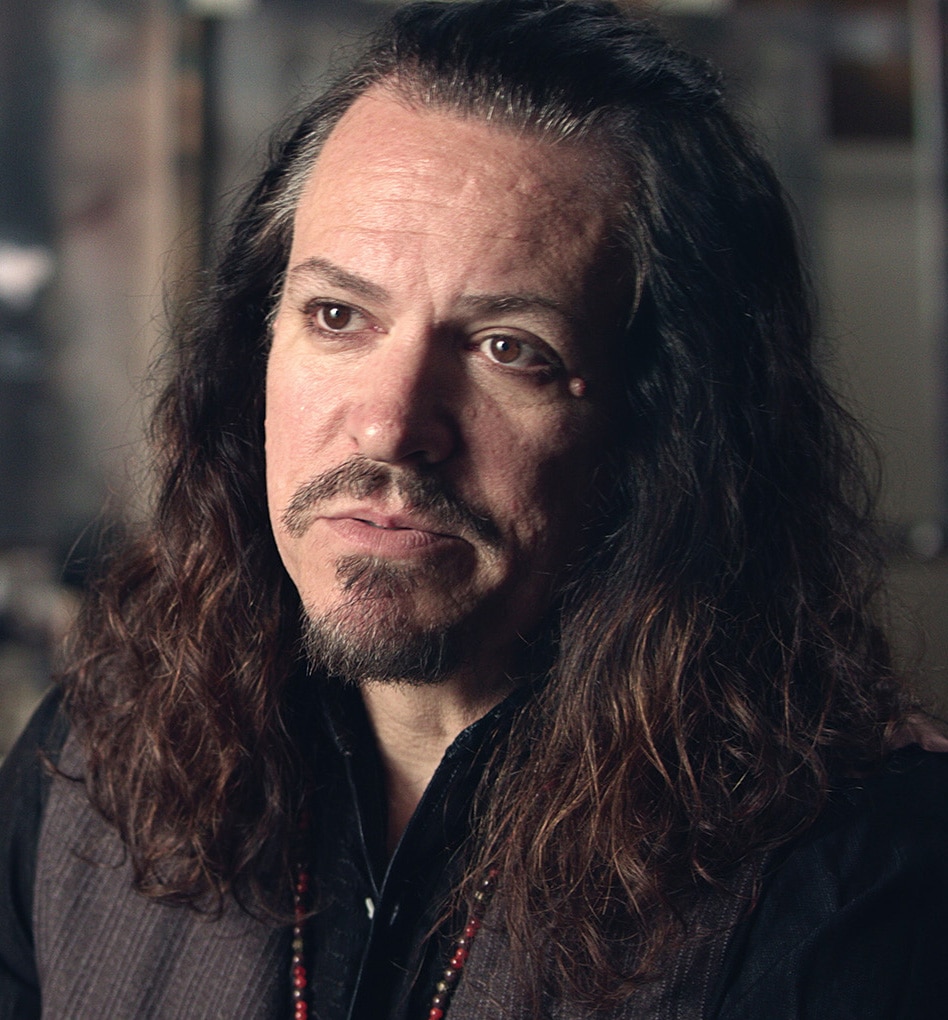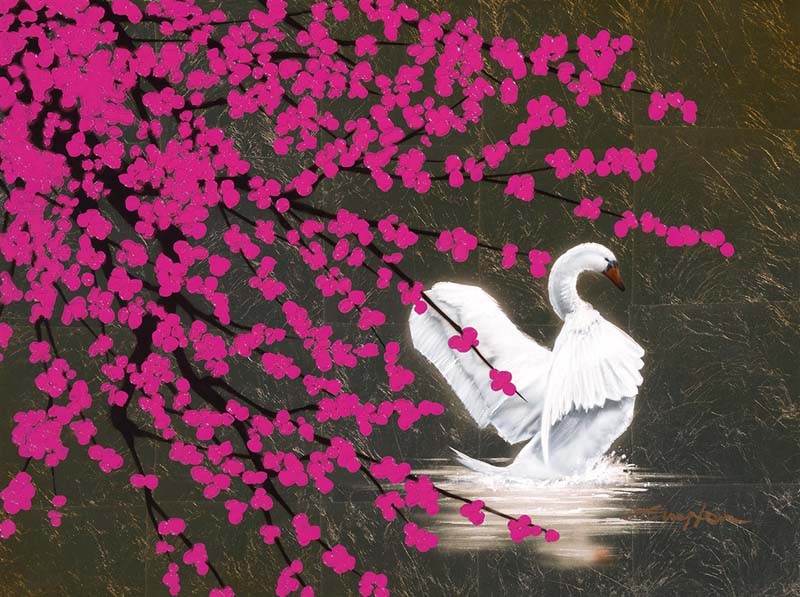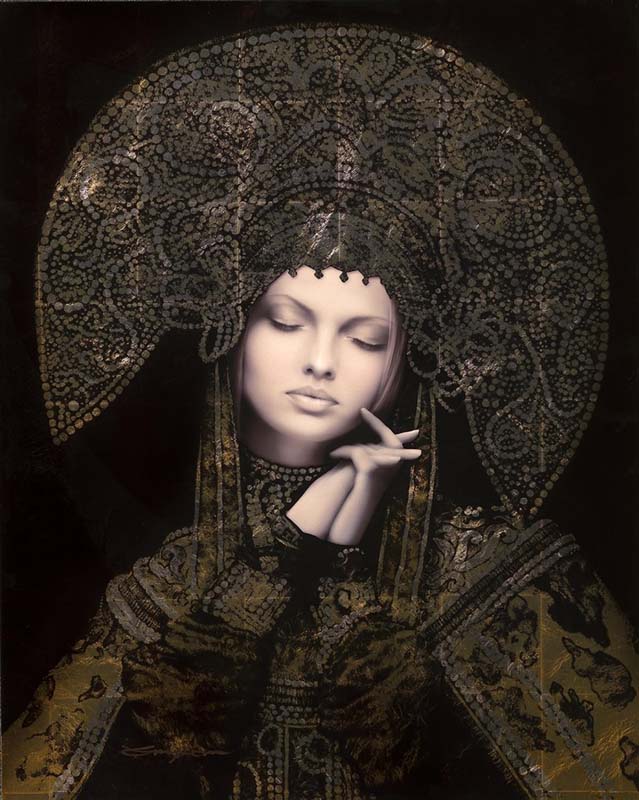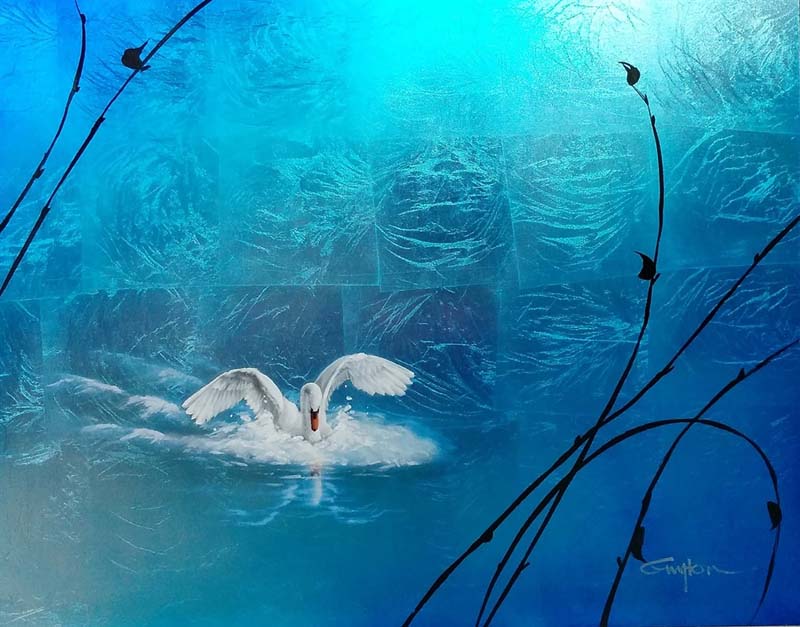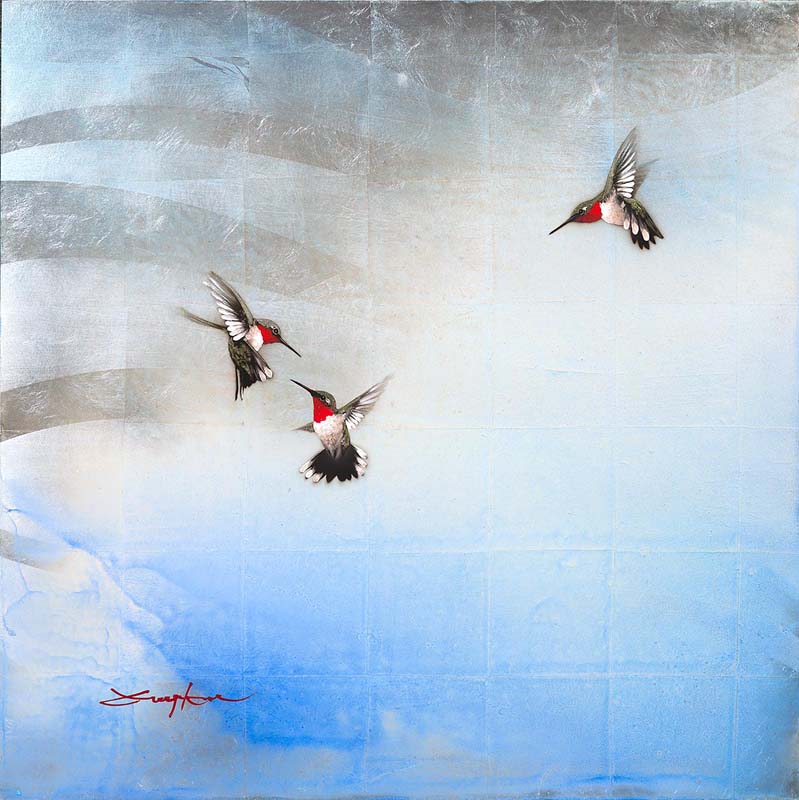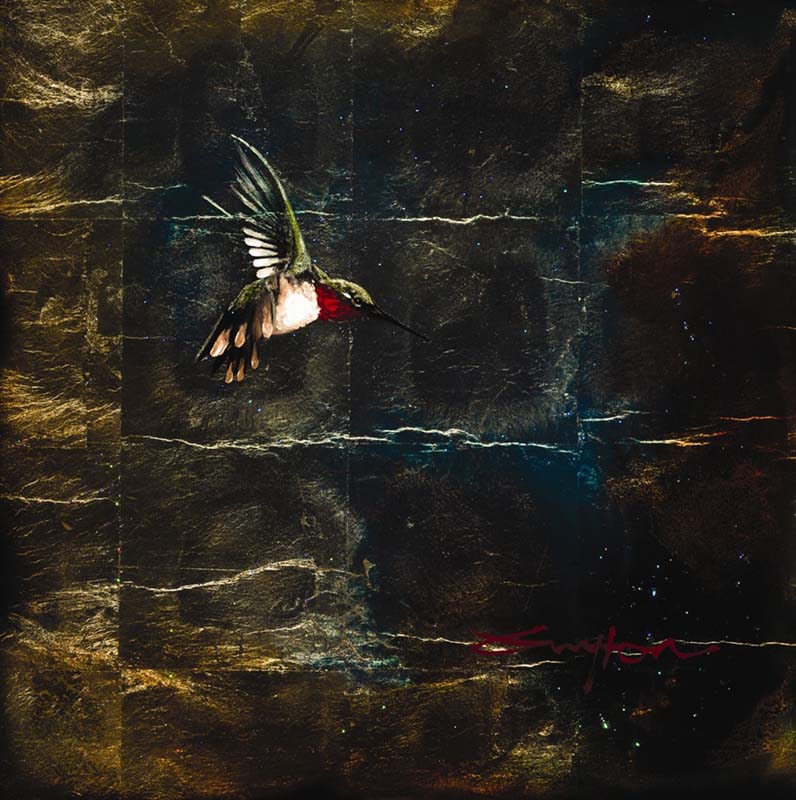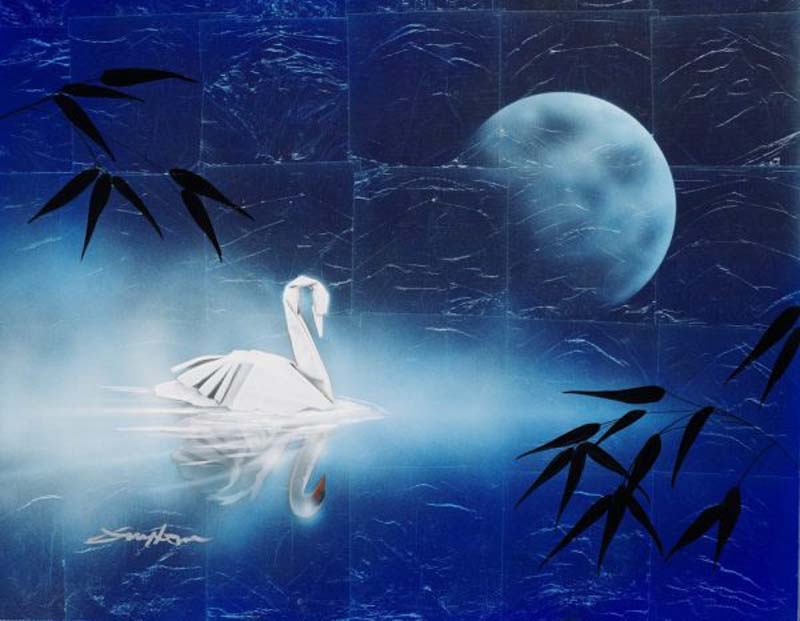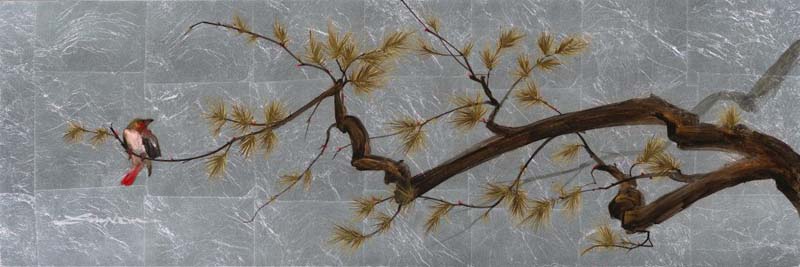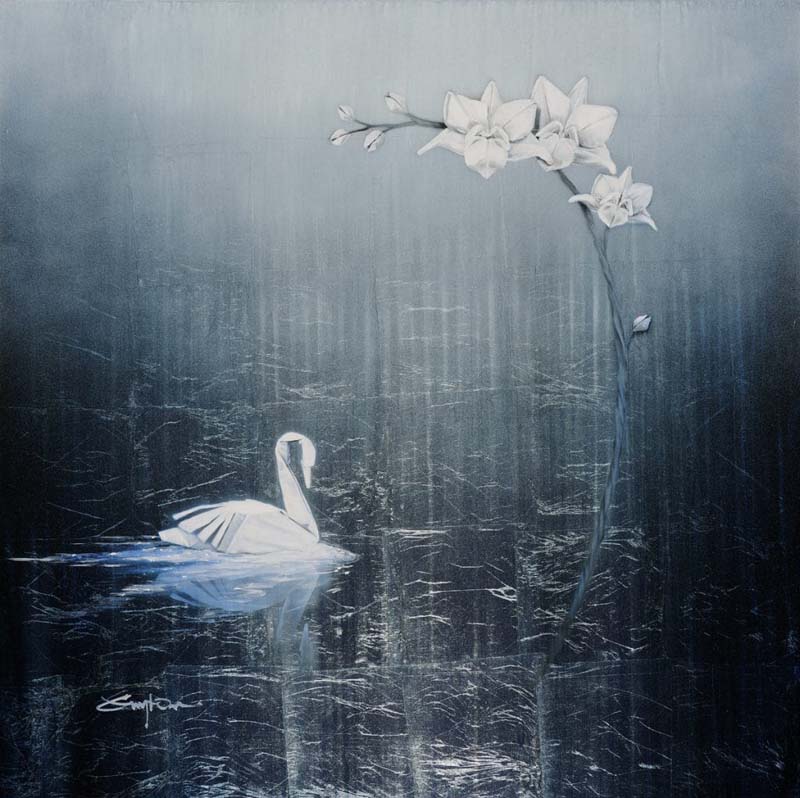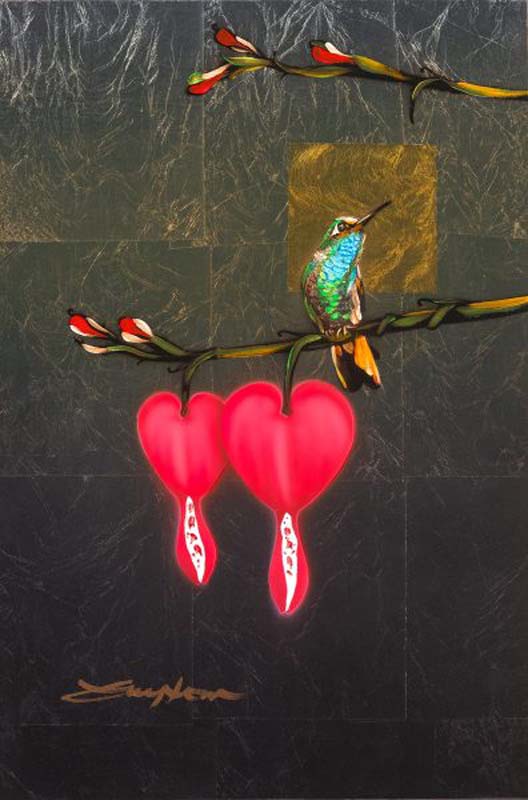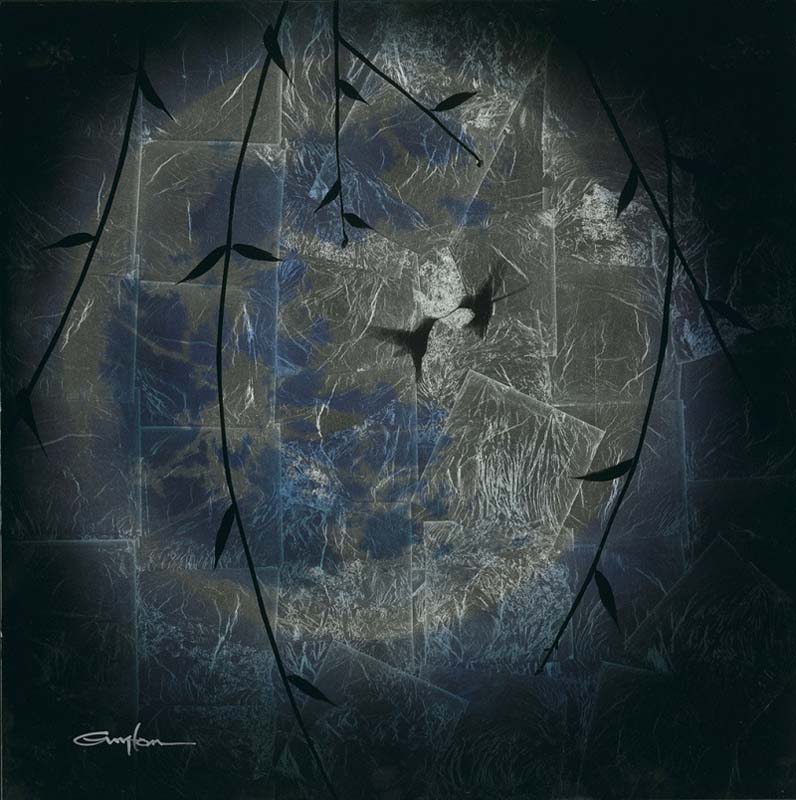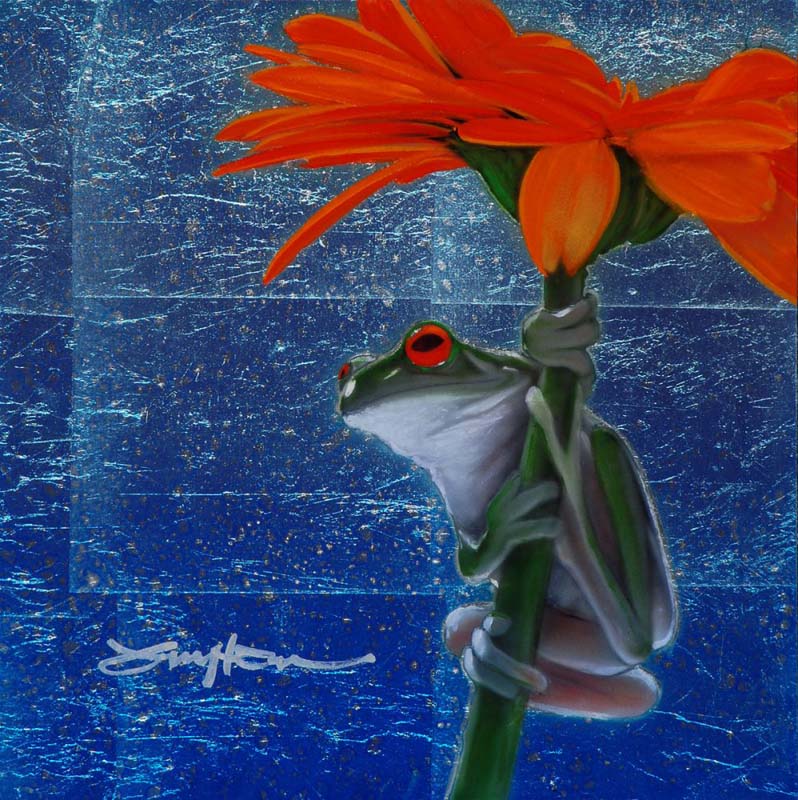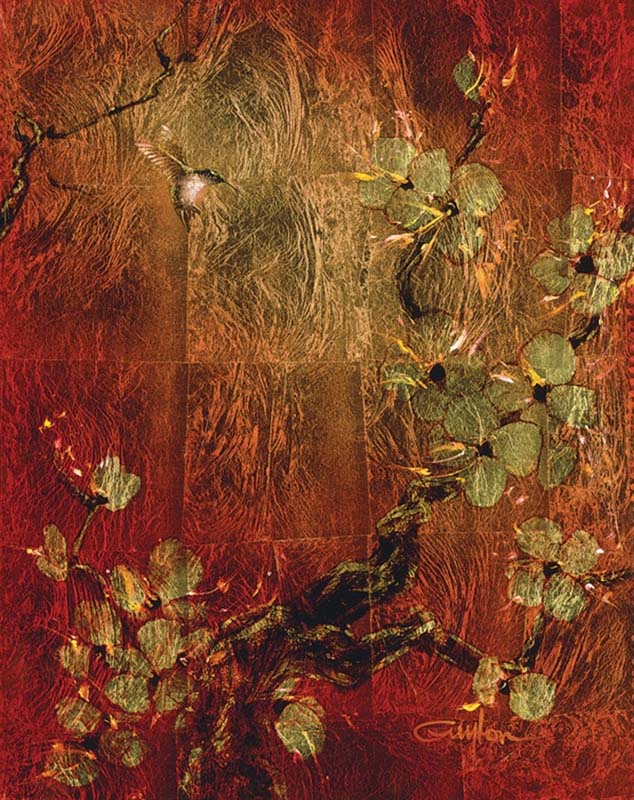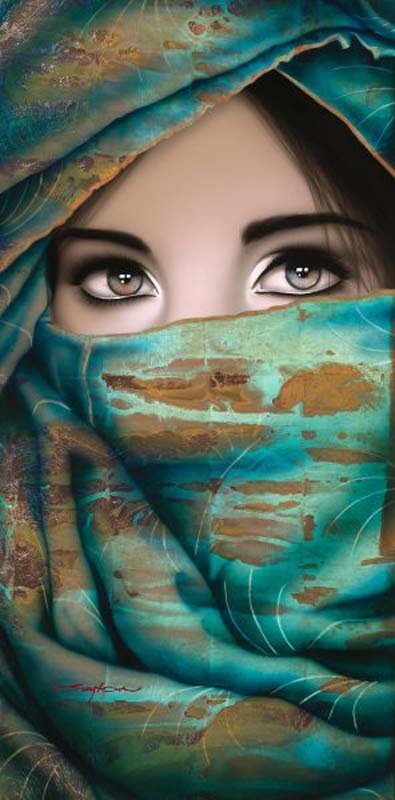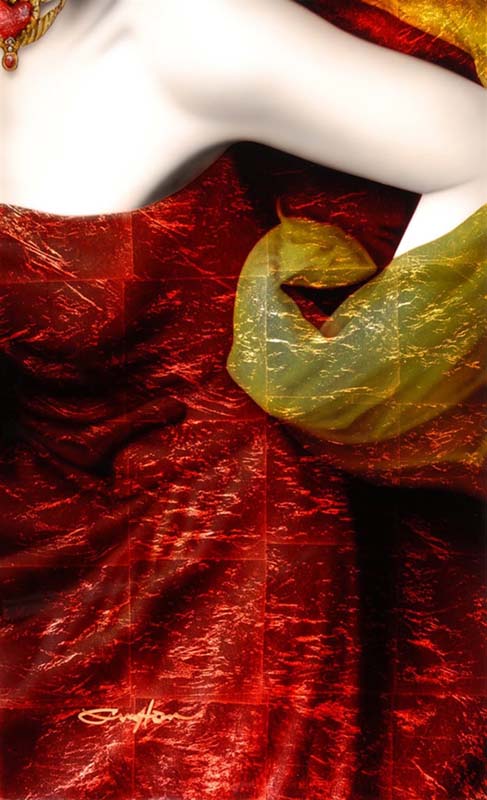Whether depicting mysterious women, flitting hummingbirds, or moonlit ponds, Guyton’s artwork is adored by art lovers and collected around the world.
PERSONAL HISTORY
Born in Newcastle, Pennsylvania in 1964, Guyton set the groundwork for his artistic career by the age of 6 under the guidance of his parents, a commercial artist and an interior designer. Guyton’s father taught him the tenants of sign painting, such as concept strategies, font design, hand lettering, and pin-striping.
His industrial town’s traditional career offerings didn’t interest Guyton, so in 1984 he attended the Art Institute of Pittsburgh where he studied fine arts, sculpture, and design theory. He graduated with an associate’s degree in visual communications.
Guyton moved to Southern California in 1987. He had aspirations of launching a music career, and to support himself, he worked as a fine and commercial artist, creating airbrush illustration, murals, and signage. Guyton also taught fourth grade art at Vineyard Middle School in Anaheim, California.
In 1997, Guyton joined Linda Jones Enterprises/Warner Bros. as a background painter for legendary cartoonist and animator Chuck Jones. Guyton was also commissioned by Looney Tunes/McKimson Productions where he became the background painter for Robert McKimson, Jr., the son of famous Warner Bros. animator Robert McKimson. Guyton worked on McKimson’s Limited-Edition Sports Animation Cels. Shortly thereafter, Guyton was commissioned by Hanna-Barbera as a background artist and celluloid painter.
During this time Guyton was privileged to study under Maurice Noble. Noble played a role in shaping the animation industry since the 1950s, working on Disney’s “Snow White and the Seven Dwarfs,” “Bambi,” “Dumbo,” and “Pinocchio,” as well as the 1966 version of “The Grinch That Stole Christmas.”
“There is no other word than ‘surreal’ for such a thing,” Guyton says. “It was a once-in-a-lifetime experience that seemed to just keep unfolding. I got to work with a lot of iconic animators, background painters, and studios.”
In 2000, Guyton entered New Horizons Computer Learning Center where he completed a full certification in Graphic Arts.
Guyton’s career continued to encompass many different fields of application and technique that would be instrumental in the eventual launch of his fine art career. Along with book and product illustration, he created hundreds of milk cap designs during the “Pog” craze for Trov Inc. He also created character designs and animations for internet upstart Honeytree Productions.
Guyton even created graphics for various types of vehicles and painted specialty vehicles for Ford, Chevrolet, and other auto manufacturers.
In 2006, Guyton was brought on board as Head Art Director for West Entertainment Group Inc. in Minneapolis. He helmed the company’s Unreal Dream project, designing and executing the artwork for its over-the-top couture gaming computers.
With the downturn of the U.S. economy in 2008, Guyton found himself working as a studio assistant for a fine artist. One day, the artist’s publisher asked Guyton to show him his own work. Upon viewing Guyton’s gold and silver leaf artwork, publisher David Smith realized he deserved his own platform and arranged his first exhibition. Guyton sold every work of art he brought to the event, a feat he repeated in his second exhibition.
In 2015, Guyton joined Park West Gallery, bringing his art to an even larger audience.
Guyton’s popularity only continues to grow, and his artwork is now displayed in galleries around the country. Today, Guyton continues to work as a fine artist in Southern California.
STYLE AND INFLUENCES
Guyton appreciates the work of masters such as Michelangelo, Vincent van Gogh, Gustav Klimt, Johannes Vermeer, Caravaggio, and Maurice Noble.
Guyton combines Japanese leafing from the 14th-century Kamakura period and Flemish glazing techniques from the 17th century to create a new, contemporary style he calls “Gilded Modernism.” Embracing ancient and modern practices, Guyton’s artwork is wholly unique.
Adding to his combined style of glazing and guilding, Guyton furthers his approach to color and method in his new self-titled “Nouveau Chimique” style and series. In this style, chemical concoctions on copper leaf are used to induce a forced patina in turn using the natural eremacausis of nature to colorize the substrate prior to the application of the actual artwork.
“To bring a blend of those art formats into the modern era with a contemporary feel, for someone to simply view, appreciate, and experience its emotion, this is what I try to achieve,” Guyton says.
His experience working in animation helped shape his artistic style as well, learning from animation’s Golden Age geniuses like Jones and Noble. By painting animation celluloids, Guyton gained first-hand knowledge of how to effectively use negative space and minimalism.
Since metal normally expands and contracts in different temperatures, Guyton developed a way to keep his paintings intact. He experimented for a year to create the perfect formulation for his boards, eventually developing metal boards with a special plastic core. These special boards are now manufactured exclusively for him to use in his art.
Guyton meticulously tiles each board with super-thin squares of gold or silver. Since he cannot sketch his images onto the surface, he draws upon his commercial art techniques—using dedicated brushstrokes to create his imagery.
It can take over a month to complete one work. Guyton’s technique doesn’t allow for the creation of limited-edition works, so every artwork from Guyton is unique.
Guyton is continually expanding his practice and now integrates other precious metals in his artwork, such as copper, platinum, and palladium.
“What has been the most interesting thing is to experiment with metal, doing patina and oxygenation, and having to take the contrast of light and dark in paint, but also reflective and non-reflective light,” he says.
Guyton’s leafing technique inspires many of the subjects he portrays—he doesn’t like to include “heavy” or “harsh” imagery in his artwork. He enjoys exploring Asian themes in a minimalist style to evoke a zen-like serenity in viewers.
Guyton’s ability to design with sophisticated detail brings drama and poetic expression into his work. With his unique vision, he merges mood and atmosphere, evoking powerful emotions that create harmony.
ACCOMPLISHMENTS
- Guyton painted the background scene for an animation celluloid (cel) for the Warner Bros. cartoon “What’s Opera, Doc?” This animation cel was included in the National Film Registry in 1992. The United States Library of Congress deemed the cartoon as one of the most culturally, historically, and aesthetically significant films of modern times.
- Guyton was commissioned as a high-end custom painter for Fender Custom Shop and Jackson guitar companies, Warlock Racing Boats, and Extreme Gaming PCs.
- Guyton was the lead character development artist and animation assistant for Honeytree Productions.
- In 2010, Guyton’s artwork, “Mystery,” was collected by the Prince of Qatar and added into the Royal Family’s art collection.
- In May 2019, Guyton appeared live for his first Las Vegas Show in five years at the DeRubeis Fine Art of Metal Miracle Mile Shops at Planet Hollywood Resort.

